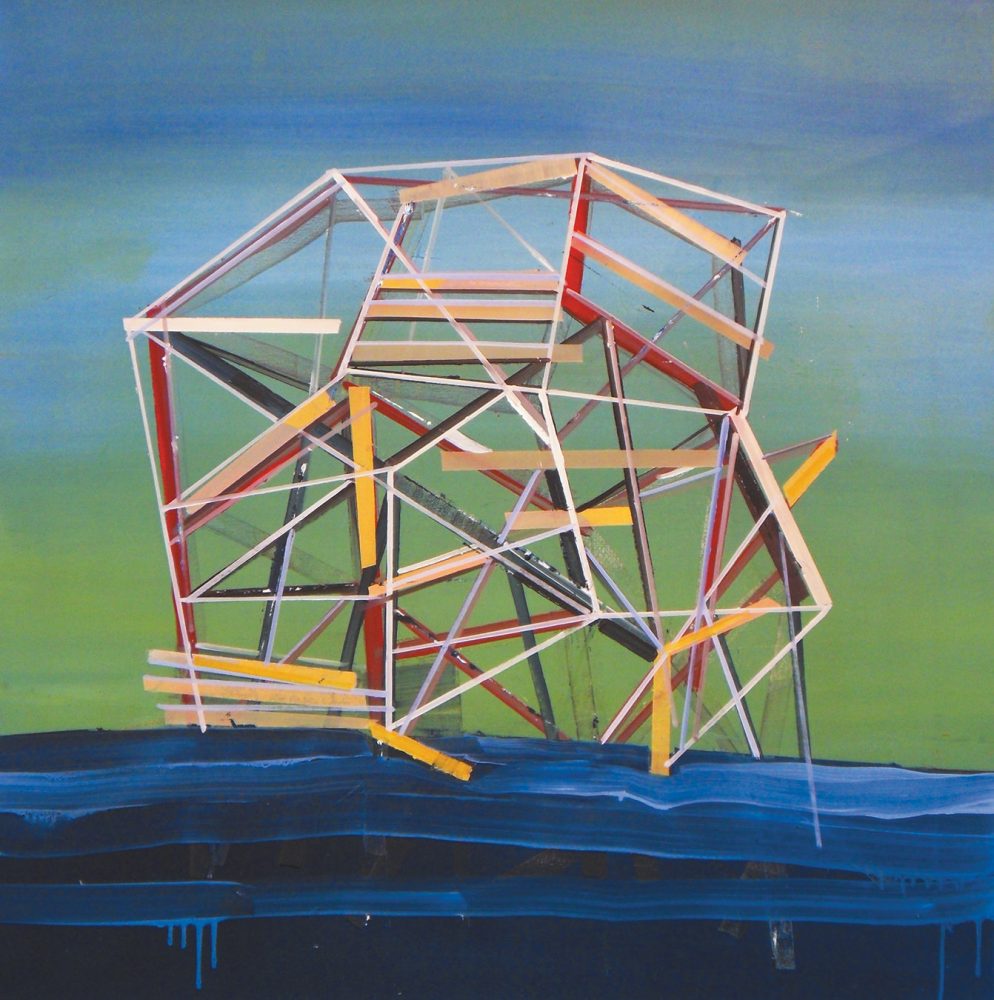There is a question that is commonly asked by students of art history, and though it is a fairly simple question, it is a loaded one: how to do you know when art is “good”? I think about this question often, as I tour a museum or attend a gallery show, and I consider it again in the presence of Holger Kalberg, a Simon Fraser University art professor and a studied painter. “A work of art should have staying power,” Kalberg says, as we sit in the clean white space of South Granville’s Monte Clark Gallery, surrounded by a few of his latest works. “It is something one could look at in 40 years and still be excited about.”
I first discovered Kalberg at the Vancouver Art Gallery’s 2006 exhibition, Paint, and though only four, and not 40, years have passed, I am certainly still excited when I think about his early, architecturally focused works. I see them again, hanging in the back gallery at Monte Clark, and ask Kalberg about this subject matter. “I’ve never painted the figure,” he says. “It leads to a narrative in the work that I am not interested in. I’d rather have a space where people can enter and make up their own narrative.”
Kalberg’s narrative begins in Dinslaken, Germany, where he was born. He has been painting formally since he was a teen, and has studied in Dusseldorf under the disciples of Joseph Beuys. In the late nineties he moved to Vancouver, and apart from a brief period in the United Kingdom when he obtained a master’s degree from the Chelsea School of Art, he has otherwise settled here in our photo-forward art scene ever since. “[Vancouver] is not the hub of painting,” Kalberg says, laughing, “but I was interested in the relationship between photo and painting at the time.” In those earlier works, Kalberg would use photographs as a starting point, creating work inspired by the buildings and structures depicted in them. But “at some point,” he says, “the photo wasn’t enough for me. The photo was a crutch to make a painting.”
“I wouldn’t say they are abstract paintings. I call them ‘apparatuses’ because they are these structures, yet it’s not necessarily a logical space.”
Though Kalberg’s newer works are just as spatially aware as his earlier pieces, they depart somewhat from the representational. In Kalberg’s words, “I wouldn’t say they are abstract paintings. I call them ‘apparatuses’ because they are these structures, yet it’s not necessarily a logical space.”
The process of creating these works is not easy, either. “Sometimes I paint the thing to death,” Kalberg says. And for every painting that works, three or four end up discarded. “I’m just attached to the next painting,” he says.
As I lean in to inspect the artwork more closely, I notice an almost paper-like quality to some of them, a layering effect that isn’t present in his earlier work. Well, remember those three or four paintings that were disposed of? They are now being cut up and put back together on paper. As Kalberg explains, “The paintings show layers of previous paintings underneath, reworked, partially painted over, false starts, corrections—all visible in the final painting.”
It makes me think of the collage style that helped to spur cubism in the earlier part of the last century, and soon Kalberg and I are back on the topic of art history. “My paintings to some degree are playing on the history of painting—Picasso, Braque, various artists and styles, much like quotes, phrases.” But, he says, “I try to be more than a one liner.”
While Kalberg’s work as a painter stays firmly rooted in language of painting, as a professor at SFU, he has noticed that with his students, “their approach to painting comes from a digital point of view, not necessarily from a depth of knowledge in the history of painting per se.” And in that respect, his own work almost seems to be a reaction to digital culture. It prompts the question, is painting still relevant today? To which Kalberg asks in return, “Does the world need yet another image? I don’t know. I’m just here to make them.”
Images courtesy of the artist and Monte Clark Gallery.










